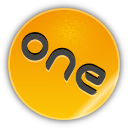Last week has been pretty hectic, i can’t really believe that we are so near to the very first release of Plasma Active.

This is the platform that will be the basis of the pursuit of our vision about the device spectrum, is the platform we will use to build not only a very good user interface for tablets, but to go from there colonizing many other kind of devices.
This has been kind of a mirage for me from the last (two? three already?) years, we are playing with this concept and playing around a workspace for mobile devices since years.. there was plasma-mid, a first prototype designed to run on devices like the venerable n810, that was around 2008.
Then we worked on the first workspace of the KDE project that was not aimed to a strictly traditional desktop machine, KDE Plasma Netbook.
We had to go deeper..
At Tokamak4, we started a new shell, this time oriented towards mobile devices, way more customizable than the previous ones, because it was more heavily based on QML. as a demo state it was made run on cell phones and tablet devices, it learned how to make phone calls, it had many user interfaces looking completely different each other.
Fast forward to the beginning of this year, also thanks to basysKom that seen the potential in it, this shell was improved and merged with a really interesting project: Contour.
It aims to bring some really innovative concept to device UX: deeper use of activities, gathering of usage statistics for useful recommendations (watch out for Plasma Active Two 😉 and in general diminish the importance of the “App” blending all in an uniform seamless “Workflow”.
Plasma Active was born, and became something way bigger than it was expected in the beginning. Bigger than just a tablet interface, that is the “visible” part that will be released tomorrow.
Bigger than just the source code that will be released: it’s a new way to approach to the development of components (not even saying “apps” anymore;) for an user experience composed of more than a single device. It’s the first really fully open stack for devices, bringing an open (as in open process, not only code) system in the closest sector of computing to date.
It’s also the manifest of commitment and reliability of an opensource community: we said over half a year ago that the release was going to be 9/10/11, and 9/10/11 is, showing how serious our intentions are.
What a ride has been, and what a ride will be from here, gonna be fun 😀




